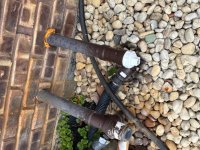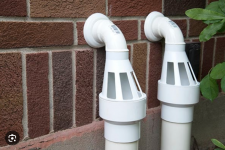Mike Goetzke
Member
- Joined
- Jul 12, 2008
- Messages
- 1,175
I've been in my house about 40 years now and the pump discharge just connects to a flex hose and spills in the yard. In the cold winter I take the end cap off and just hook a 4" corrugated hose to it. There are now two discharges since I added a backup pump a couple years ago. Ha - I'm recently retired and knocking off thinks I wanted to do many years ago off the list.
I want to clean up the drainage piping. I see they make a fitting called a freeze guard that allows the water to escape even if the main line freezes. I don't seem to have room for these to fit. My discharges are as high as they can go. I see many applications of this device where there looks like 2 feet of space between the pipe and ground.
Am I stuck with the ugly pipe and changing piping in the winter? Any ideas welcome.
Thanks
[attachimg=1]
I want to clean up the drainage piping. I see they make a fitting called a freeze guard that allows the water to escape even if the main line freezes. I don't seem to have room for these to fit. My discharges are as high as they can go. I see many applications of this device where there looks like 2 feet of space between the pipe and ground.
Am I stuck with the ugly pipe and changing piping in the winter? Any ideas welcome.
Thanks
[attachimg=1]


